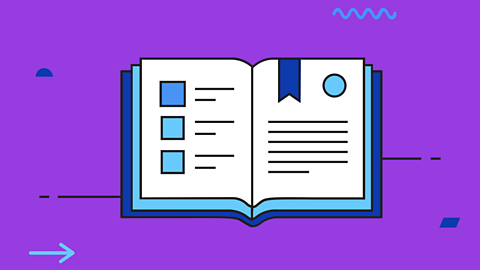Past papers and mark schemes
Here you can find past papers for AQA GCSE English Language. Use the links below to download question papers and mark schemes. If you’re unsure whether you need Foundation or Higher papers, consult your teacher.
June 2023
Paper 1 - Higher tier - Past paper | Mark scheme
Paper 2 - Higher tier - Past paper | Mark scheme
June 2022
Paper 1 - Higher tier - Past paper | Mark scheme
Paper 2 - Higher tier - Past paper | Mark scheme
2021
Paper 1 - Higher tier - Past paper | Mark scheme
Paper 2 - Higher tier - Past paper | Mark scheme
These resources were created to support your exam preparation. The past papers and mark schemes are the intellectual property of AQA and are copyright © AQA. All AQA material is reproduced here with their permission.
Practising questions
This page provides tailored tips to help you approach your English language exam. These insights will help you develop the key reading and writing skills needed to tackle a variety of question types.
The exam assesses your ability to understand, analyse and compare texts, as well as to write clearly, persuasively and creatively. These tips will help you to develop essential exam strategies such as identifying key information, analysing language and structure and comparing texts.
Remember, the questions on the exam paper are not released until the day of the exam. The examples on this page are a guide to the topics and question structures that could be on the paper.
Tips from past exam papers
Tip 1: Identifying and interpreting information (Paper 1)
Past paper trend: The first question on Paper 1 assesses AO1 (Assessment Objective 1) which focuses on your ability to 'identify and interpret explicit and implicit information and ideas'.
Exam tip: This question often directs you to specific lines in the text. The examiner will expect you to quote and reference these lines accurately. If there are more potential answers than marks choose the most relevant and direct responses.
Strategy:
- Read the question carefully and highlight the key words that indicate what to look for.
- Highlight the relevant lines in the text to ensure you pick the right quotes.
2: Locating quotes (Paper 1 and 2)
Past paper trend:
- Paper 1: Focuses on one source (a fictional extract).
- Paper 2: Includes two sources (non-fiction texts from different time periods).
Exam tip: Always read the questions carefully before you begin. This will help you find quotes that directly support your answers. Focus on what the question is asking and choose your evidence accordingly.
Before reading the sources skim through the questions carefully to identify the key focus of each. This will help you locate and select the most relevant information efficiently.
Strategy:
- Read the source first then revisit the questions and highlight key phrases.
- Use different highlighter colours for each question to mark relevant quotes. You can use highlighters on the question booklet to mark important information, but not on the answer booklet. In your answers underline or annotate relevant details instead.
For example:
How does the writer use language here to describe the man’s appearance?
Look for key phrases like 'use language' and 'describe the man’s appearance'.
Use a different highlighter colour for each question. When re-reading the text mark quotes related to each question in the corresponding colour. This makes it easier to organise and reference your evidence later.
3: Analysing language and structural techniques
Past paper trend: There is at least one question requiring you to identify, analyse and explain the impact of either language or structural techniques used in the texts.
Exam tip: Know the difference between language and structural techniques:
Language techniques focus on the specific words and phrases used by the writer, such as metaphors, similes, alliteration or personification. Your task is to explain why the writer has chosen these techniques and the impact they create.
Structural techniques refer to the ways a text is organised and presented. These include sentence length, paragraphing, shifts in focus, repetition and contrast. When analysing structure consider why the writer has chosen these techniques and how they shape meaning or impact the reader. For example a one-line paragraph might be used to emphasise a key idea creating a dramatic or suspenseful effect. Always think about the writer’s purpose and the effect on the audience.
Strategy: Revise common language and structural techniques so that you can easily spot them and understand their effect. The questions specifically ask about language or structure so make sure that you use the correct techniques when writing about either.
4: Comparing texts
Past paper trend: You will be assessed on your ability to compare texts in Paper 2.
Exam tip: You will be asked questions about each text individually and you will also be asked to make a close comparison between the two pieces. To answer it you need to highlight the difference or similarities of the texts and to write about them in a comparative way.
Strategy: A good way to answer this is to use comparing statements with comparative connectives. This format could help:
In source A, the writer states “add quote.” This suggests…
In source B, the writer states “add quote.” This suggests….
This is different/similar because…
5: Your own writing (Paper 1 and 2)
Past paper trend: Half of the marks for both Paper 1 and Paper 2 are awarded for your writing.
Exam tip: In Section B of both Paper 1 and Paper 2, there are 40 marks available:
- 24 marks for content and organisation (AO5)
- 16 marks for technical accuracy (AO6)
It is important you save time to tackle this part of the exam.
Strategy:
Choose only one task. There will always be two tasks. Choose the one for which you think you can achieve the highest mark. Read the task carefully and prepare by looking at the format, the intended audience and the purpose. Use FAP to help you.
- F - Format - What kind of text do you need to write and what are the conventions of that text?
- A - Audience - Who is the intended audience and how does this impact on your style and tone?
- P - Purpose - What are you writing? What are you writing for? How does this impact on your content and the style of what you write?
Manage your time wisely. Ensure you allocate enough time to complete Section B.
Use the sources for inspiration. The reading section often links thematically to the writing task, so consider the techniques used by the writers when crafting your own response. However, do not directly copy phrases from the source texts.
Focus on spelling, punctuation and grammar (16 marks): Check the sentences, punctuation and paragraphs carefully. Ensure every sentence starts with a capital letter and ends with the correct punctuation. Go back through your writing to correct any mistakes.
Plan for content and organisation (24 marks): To achieve top marks your writing must demonstrate 'compelling and convincing communication'. To help to achieve this:
- Plan your writing before starting: Outline the main points and structure.
- Decide on the vocabulary, punctuation and techniques you will use.
- Note down key vocabulary, phrases and punctuation during your plan. This helps you stay organised and ensures you don’t forget important elements.
Revise English language
Explore more English language resources with the full range of help from Bitesize.
Revision podcasts - English literature
Supercharge your GCSE English literature revision by listening to these podcasts on set texts.

Support - exams and revision
Exams can be stressful, but don't worry: we've got you. Check out our handy tips and advice for keeping on top of your studies and revision.

AQA GCSE English language
Bitesize's full range of revision materials for English language.

Podcasts - Study support
Study smarter and take care of your wellbeing with two Bitesize experts.
